
Search Wild Foods Home Garden & Nature's Restaurant Websites:
Yew
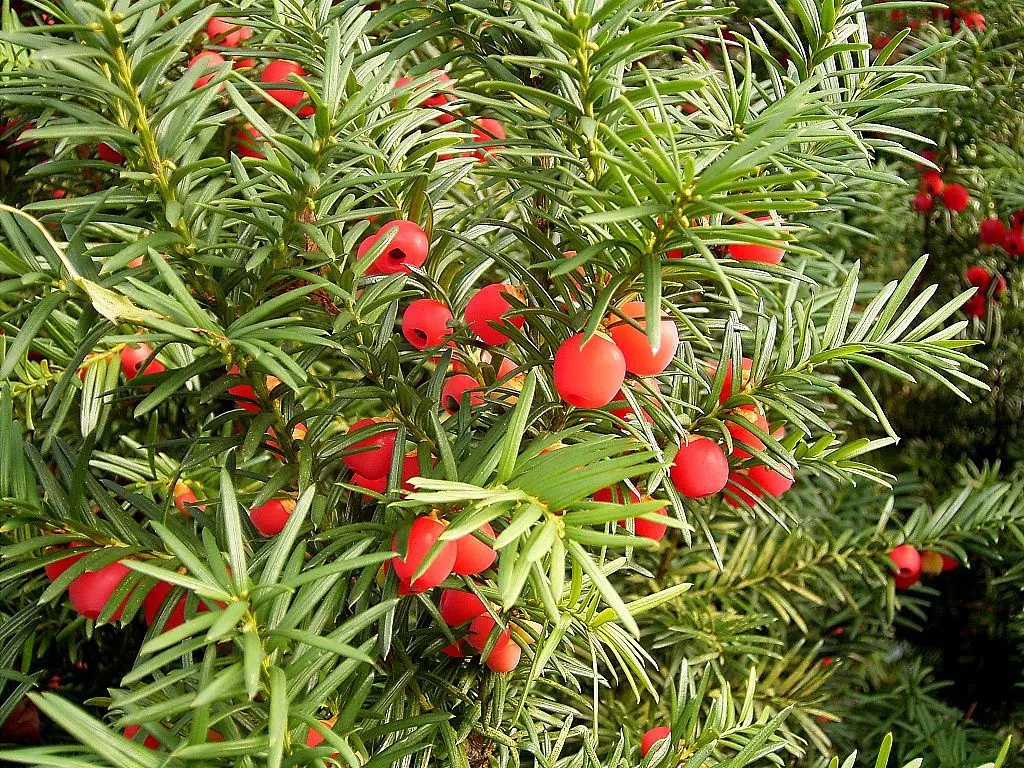
Ripe Yew Berries. (By: Frank Vincentz GNU Free Documentation License, Version 1.2)
(NOTE: If you are not interested in growing the Yew tree, but just finding the plant and using the berries, try going to the Nature's Restaurant Online site Yew page.)
Yew Berries (Taxus baccata), Taxus. The red flesh of the ripe berries is safe and sweet tasting, though without any great flavour, but the seed in the centre of the red berry is deadly poisonous, and the rest of the tree is deadly poisonous. Though there are different species of the Taxus, I give the description of the Taxus baccata, but most are basically the same, and in fact, many taxonomists consider them all just variations of one tree, and use the name Taxus baccata to cover the whole group.
This is not a tree I would recommend just for the food. But, if you are going to plant an evergreen hedge, or wanted an evergreen landscaping tree, this is a great tree for many reasons. Nice dark green colour all year long, grows at a reasonable rate, lives an extremely long time, has no disease issues I know of, bugs leave it alone, takes to pruning without problem and can be trimmed to be hedge shaped easily. It can handle drought well once established. And, you get the bonus of the very nice looking, not bad tasting berries.
Please teach young children to consider these poisonous, and don't eat them in front of young children. The seeds from three berries is all it takes to kill a child if the seed is cracked and digested. Teach children that the leaves are deadly poisonous as well.
Despite what you might read on the internet, do not use any other parts of the plants for medicinal purposes. I've read some stuff that is very confused, wrong and dangerous. Only the flesh of the ripe berry is safe, and even then, extreme caution must be taken to not eat the seeds
Planting: Virtually any tree nursery sells these in pots. Prepare the holes by putting in compost, composted manure and mix with the soil you dug from the hole, plant, cover, tamp the soil and water. Keep damp until they take well.
Soil & Site: They will grow in most soils, and a very wide range of soil pH, they just don't like to be in wet, soggy ground. Clay is fine, but you will get better, faster growth in a moist, loose, nutrient rich loamy soil. They will grow in full sun and partial shade.
Maintenance: Once established, there is nothing that has to be done. It will trim to shape easily, and you can do this any time during the growing season. If you have an old one, and cut it back a lot, it will regrow from the lower part of the trunk or branch - a very nice feature of this tree, as most trees will not do this.
Cuttings: You can propagate as many as you want from cuttings:
- First, get 10 cm (4 inch) pots and 3/4 fill with compost and sand for the soil mix.
- Take cuttings of 10-15 cm (4-6 inches) long new growth (green twig), and pull off all the leaves of about half of it on the lower end of each one.
- Make a hole in the soil with your finger or a pencil in each pot, and put the lower end of the cutting in the soil, so that half is above the soil, half in the soil.
- Gently firm the soil around the cutting to make full contact with the soil, but don't pack it down hard.
- Water, and put in good light, but not direct sun. Keep the soil moist.
Cuttings root easily, and most should take without issue. Don't let the cutting in the pot get frost.
Seeds: Though you can grow the Yew from seed, it is a very long, precise series of steps that you cannot get wrong or you will have to start again. If you want to, here are the basic steps (though I know after reading them, anyone who wants one of these trees will do the cuttings or just buy them at a nursery):
- Get a loose, damp, but not wet soil medium such as sterile potting soil or peat moss and mix with the seeds you want to sprout. Two cups of medium should be fine for all but a huge amount of seeds.
- Put the seeds and medium in a large enough zip-lock type freezer bag that will hold the two cups of medium. Seal the bag and poke 3 or 4 pencil lead sized holes in the bag and write the date on the bag.
- Put this in a spot out of direct or strong light for 6 months at room temperature - as close to 20 Celsius or 68 Fahrenheit as possible.
- Next, put the bag in your fridge (not freezer) for 10 months. Take a look occasionally starting after 6 months to see if any of the seeds have rooted. If so, take the seed out and put in a 10 cm (4 inch) pot of its own with a mix of compost and sand. Bury the seed about 1 cm (3/8 inch) deep, and be careful not to break the root. Put in a bright, non-direct sun spot and keep the soil moist.
- After 10 months, plant all the seeds as above.
- If after the first year some of the seeds don't sprout, leave them outside in a shady area, keep moist and leave until they sprout - winter and summer. It can take years for all of them to sprout.
Harvesting: The berries are ripe in the fall when they turn bright red.
Using: When the berry is bright red – don't even think about eating the green ones – only eat one berry at a time. Do not put more than one at a time in your mouth, as this only increases the chances you will slip up and eat a seed. Use your tongue, not teeth, to remove the flesh from the berry, then before swallowing the flesh of the fruit, get the seed out of your mouth. Then move onto another berry. Only have one the first time you eat them, just to see if you are allergic. The reason you use your tongue, is that the seed in the berry, if whole and uncracked, might pass through your system undigested if you slip up and swallow one. If you were to bite on the seed, crack it and then accidentally swallow it - you're in trouble (if you do this, make yourself throw up right away). So by using your tongue, and eating one at a time to ensure you don't swallow, you are doubling your chances of not harming yourself.
Eating these berries - even if you are not allergic - causes the sensation of being very thirsty after about 15 to 30 minutes. Of course, the more you eat, the more noticeable this is.
Below is a list of the types of Yew trees you can encounter in Eastern North America:
- Yew, English Yew or European Yew (Taxus baccata).
- Canadian Yew (Taxus canadensis).
- Japanese Yew or Spreading Yew (Taxus cuspidata).
- Florida Yew (Taxus floridana).
Description for the Taxus baccata (most common one sold for landscaping):
- USDA Plant Hardiness Zone: 5-10 (More information on hardiness zones).
- Soil pH: 5.5-8.5
- Plant Size: Generally up to 20 meters (65 feet), but some Yews can reach 40 meters (130 feet) high
- Duration: Very long lived tree - oldest in Scotland is apparently about 2000 years old
- Leaf Shape: Lanceolate, flat, "evergreen needle"
- Leaf Phyllotaxis (Arrangement) on branch: Spiral - each leaf is attached to the stem like stair steps attached to a central pole on a spiral staircase, however due to how the leaf stems twist, it appears without careful examination that there are two rows of leaves.
- Leaf Size: 1–4 cm long and 2–3 mm wide
- Leaf Margin: Entire (smooth edged)
- Leaf Notes: Leaves are dark green and soft feeling. Leaves are very toxic.
- Flowers: Small creamy white to yellowish flowers coming from leaf axils
- Fruit: 8–15 mm diameter bright red, generally spherical (some species slightly oval), with translucent quality when ripe, green when unripe. Hole in bottom of flesh of fruit revealing the seed in the middle. Green fruit is toxic, red ripe fruit is sweet and edible but without a lot of flavour.
- Bark: Thin, brown with a scaly quality, often partially peeling. On older trunks, peeling sections of reddish bark and sections of grey bark.
- Habitat: The Taxus baccata prefers soils that are slightly alkaline, while Taxus in general can be found in a very wide range of habitats. Most often found in Eastern North America as a planted ornamental.
Web Resources:
- Recipe search on the web here (Google search) and here (Bing search).
- Pictures on the web here (Google images) and here (Bing images).
- USDA distribution map and plant profile for all Taxus in North America here.
- The Biota of North America Program (BONAP) distribution map here. BONAP map colour key here.
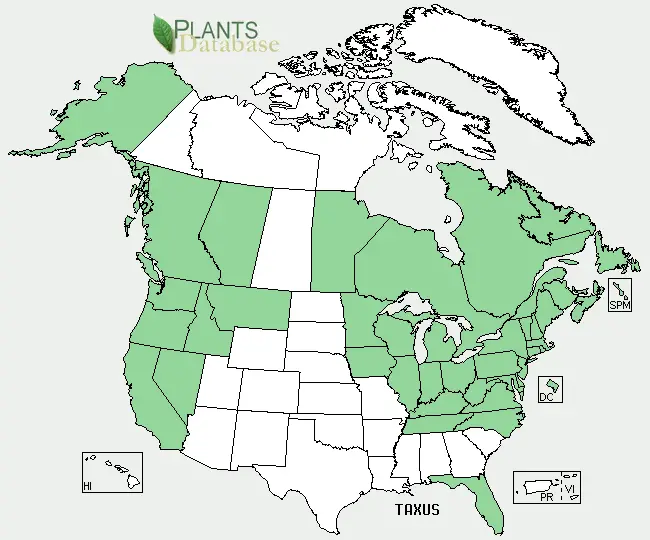
Yew (Taxus) range. Distribution map courtesy of U. S. Department of Agriculture (USDA Natural Resources Service) and used in accordance with their policies.
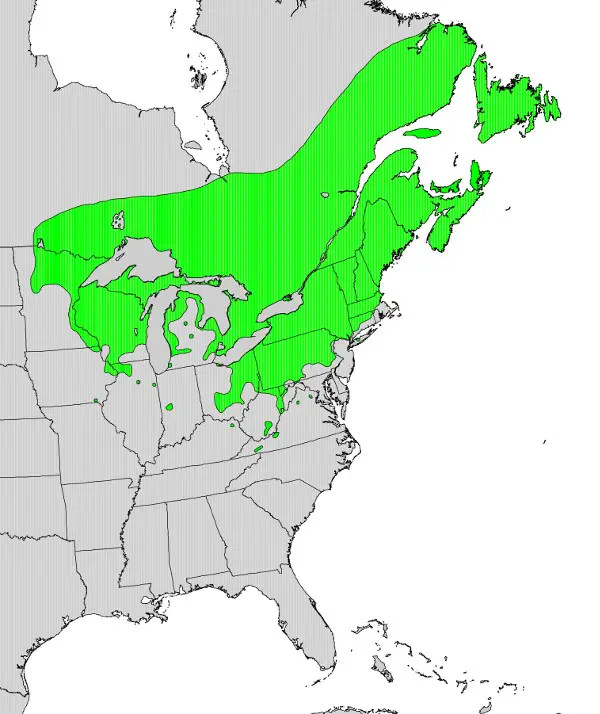
Canada yew (Taxus canadensis) range. Distribution map courtesy of the USGS Geosciences and Environmental Change Science Center, originally from "Atlas of United States Trees" by Elbert L. Little, Jr. .
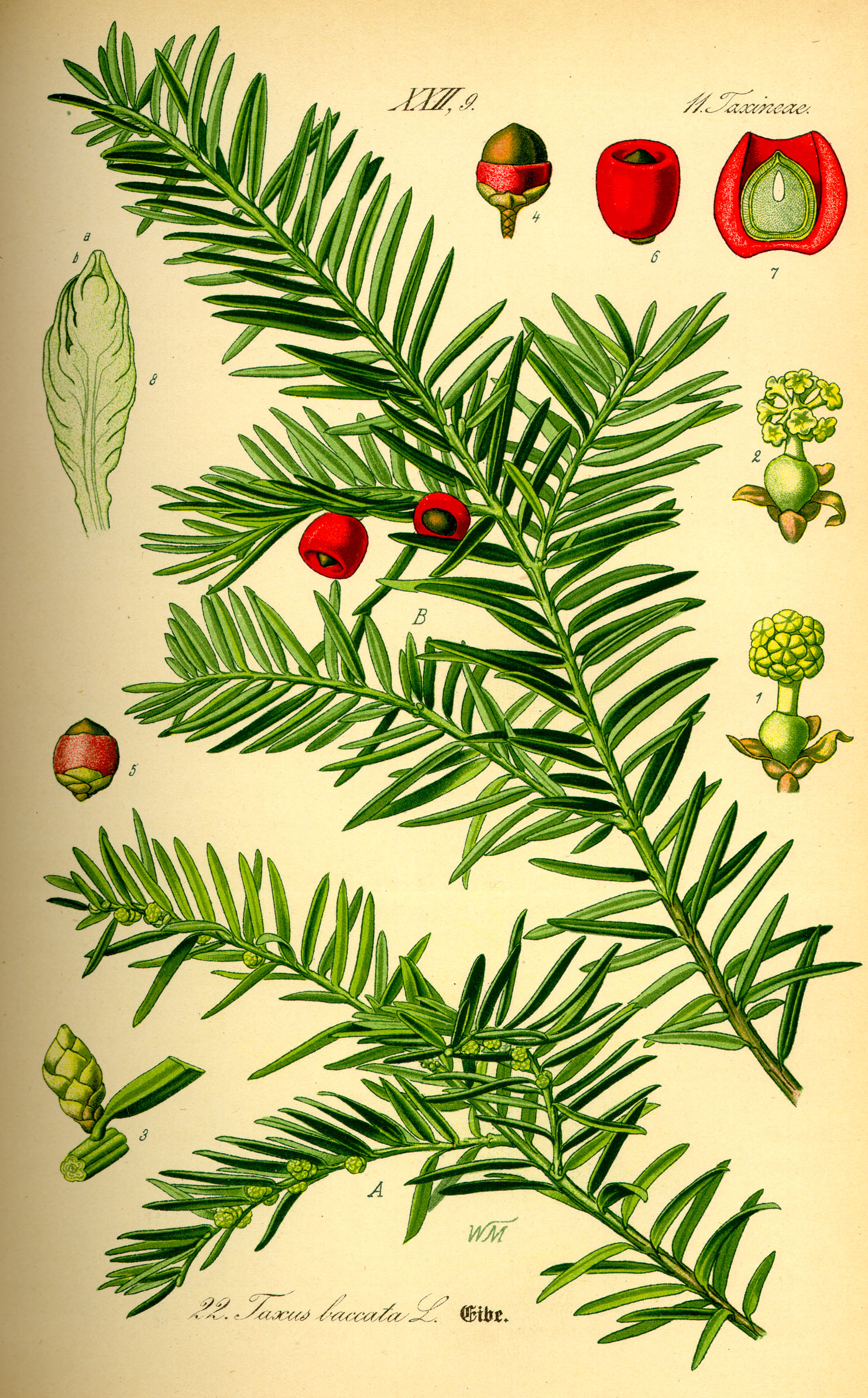
Illustration of the Taxus baccata. (By: Prof. Dr. Otto Wilhelm Thomé; Flora von Deutschland, Österreich und der Schweiz 1885, Gera, Germany)
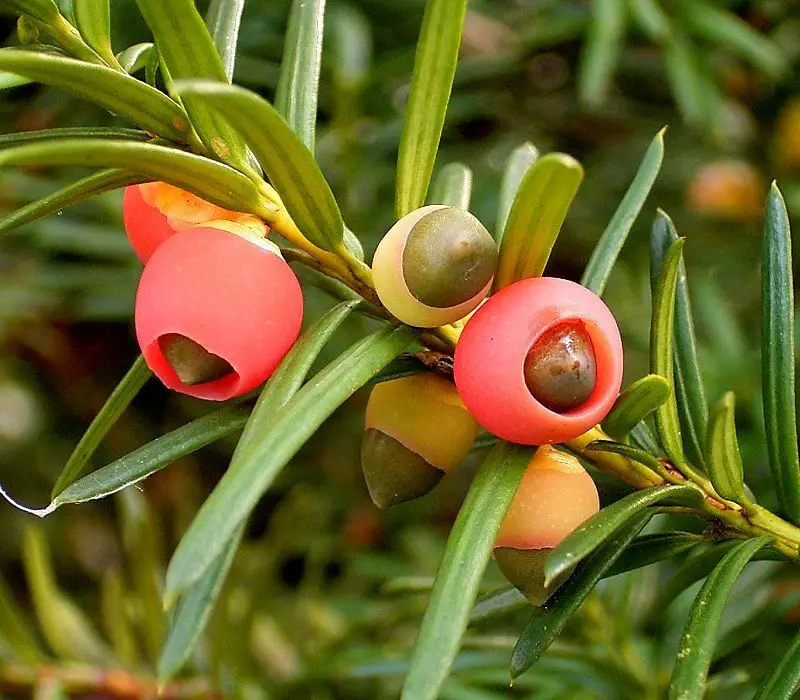
Ripe, red Yew fruit with unripe, green berries. Never eat a green or partly green berry. (By: Frank Vincentz GNU Free Documentation License, Version 1.2)
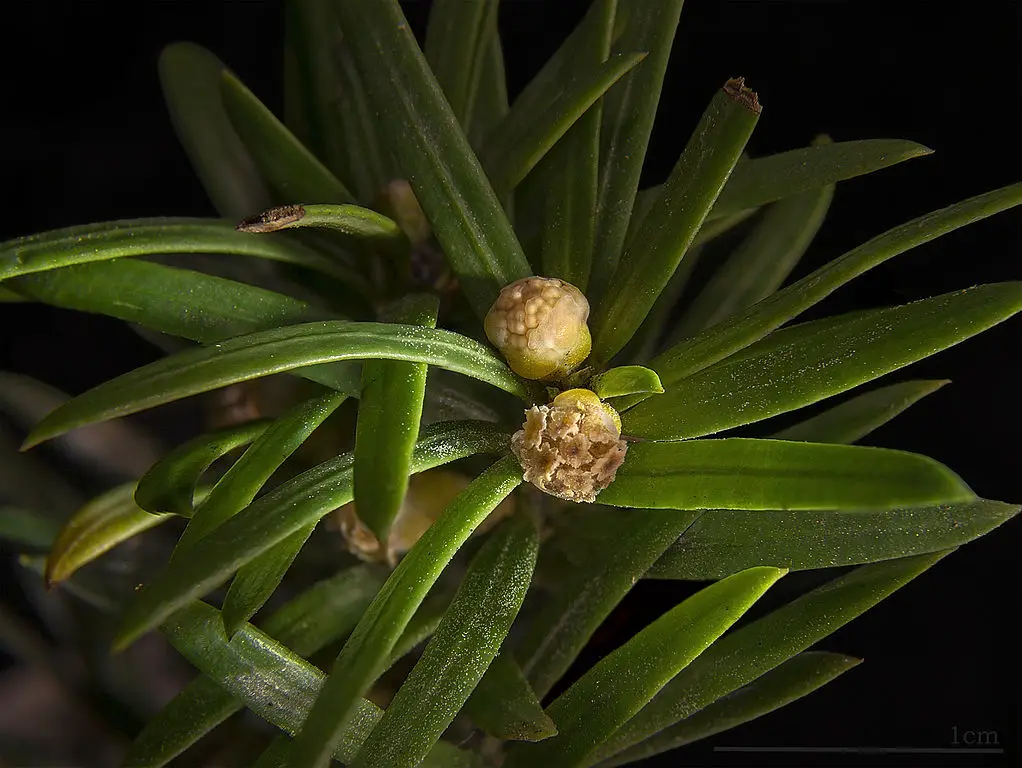
Male flower of the Taxus baccata. (By: Didier Descouens Attribution-Share Alike 4.0 International license)
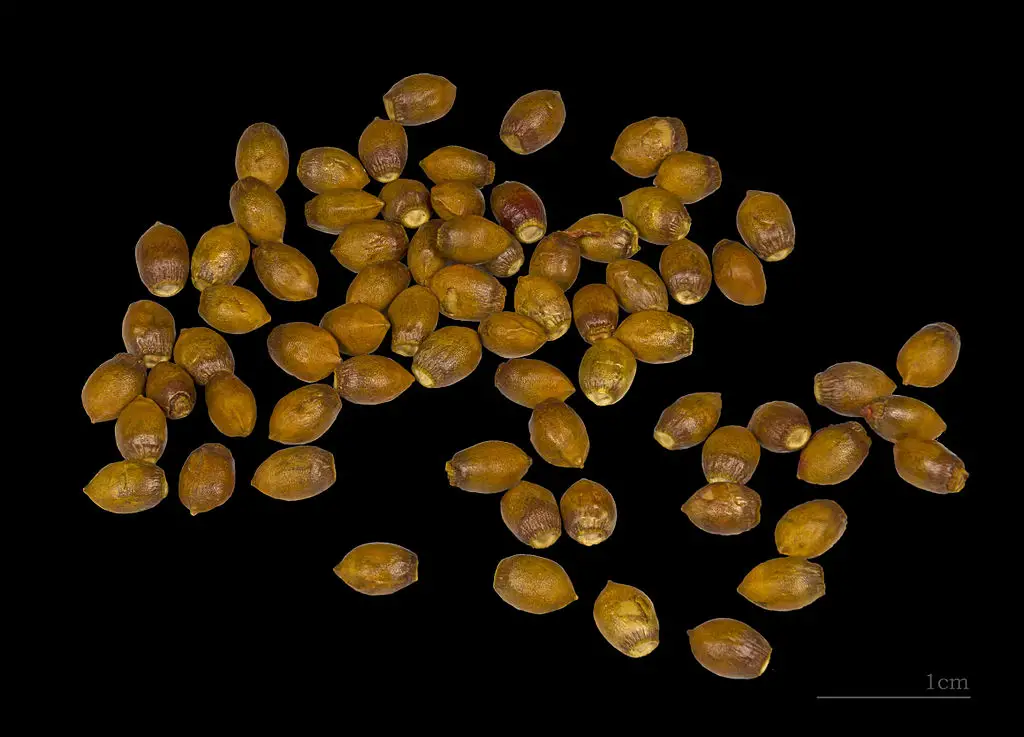
Seeds of the Taxus baccata. (By: Didier Descouens Attribution-Share Alike 4.0 International license)
Search Wild Foods Home Garden & Nature's Restaurant Websites:
Share:
Why does this site have ads?
Originally the content in this site was a book that was sold through Amazon worldwide. However, I wanted the information to available to everyone free of charge, so I made this website. The ads on the site help cover the cost of maintaining the site and keeping it available.
Google + profile
